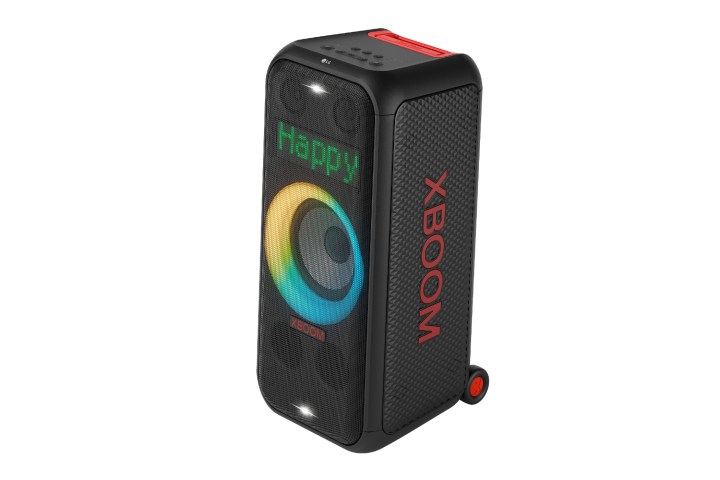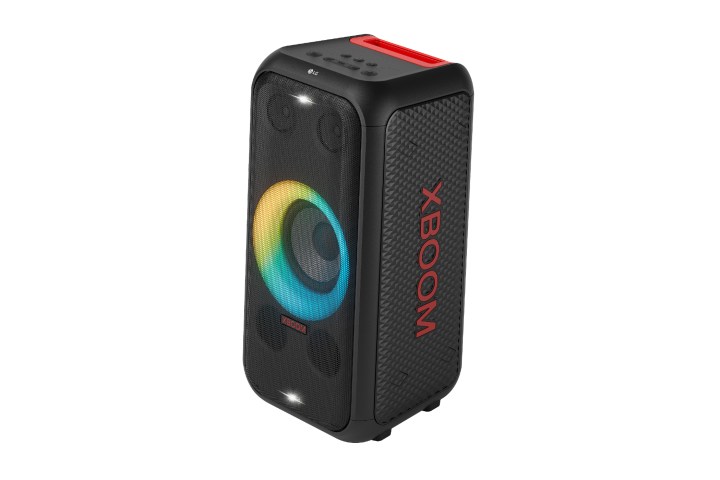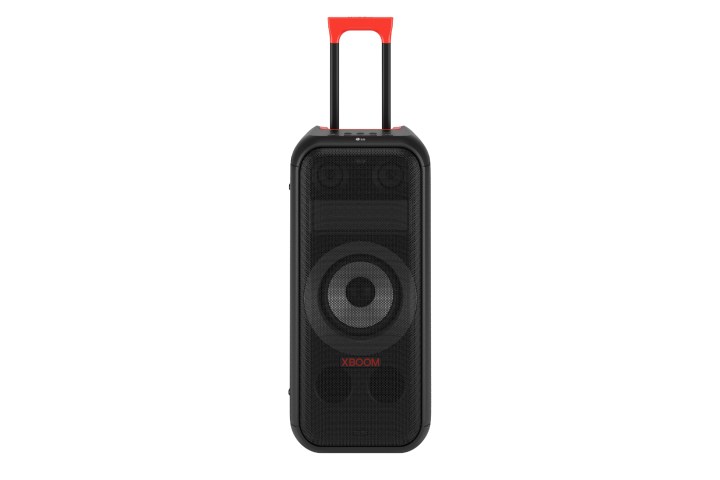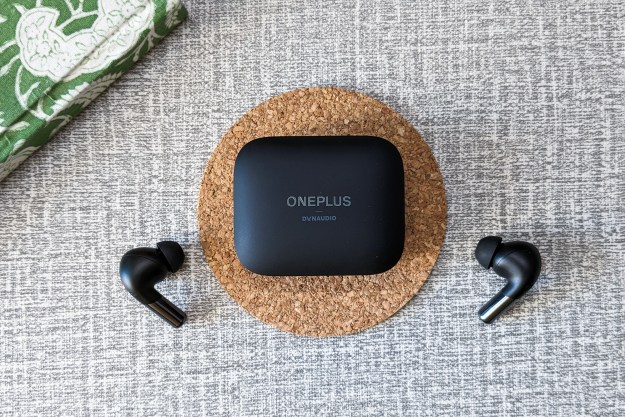When you think of booming Bluetooth speakers, LG isn’t the first brand to come to mind. But today the Korean electronics giant is hoping to get your attention, announcing the latest in their line of XBoom speakers, the XL5 and XL7. At 200- and 250 watts respectively, LG’s massive portable party machines are emblazoned with customizable LEDs and feature karaoke functions, IPX4 water resistance, and more.

While there were limited specs and details at press time (including pricing and availability), what we do know is that the two XBoom models announced today are in line with models of LG’s previous XBoom brand of large, portable Bluetooth party speakers, such as the RN5 and RN7, that are designed to be dropped down in any party situation complete with sound and light show — just add a Bluetooth source.
The larger of the two speakers announced today, the XL7, is a massive 32.4-pound speaker on wheels that measures 12.2 by 27.5 by 12.4 inches, or slightly larger than a carry-on suitcase; it even has a telescopic handle for wheeling it along. That substantial body houses three drivers: an 8-inch woofer, and two 2.5-inch tweeters. The bass features what LG calls Dynamic Bass Optimizer, which it says has “punchy bass” that “guarantees listeners an optimized, well-balanced audio performance without bass distortion.”
But where things get interesting is with the XL7’s lighting effects, which are a definite upgrade from previous generations of similar XBoom speakers. First, there’s a new Pixel LED panel above the main woofer that can display images, animations, and text visual EQ effects that move with the music. The woofer itself is an LED ring, too, that produces colorful lights that spin, flash, and pulse along with the music. All this is programmed via the XBoom app. The XL7 boasts a 20-hour battery that charges fully after just 3.5 hours.
Almost identical, the XL5 is slightly smaller at 11.1 by 22.4 by 11 inches and weighs in at a still-substantial 26.4 pounds, but you’re going to feel that more because, unlike the XL7, this one doesn’t have any wheels or a telescoping handle, so you’ll have to get some help carrying it. Slightly less powerful at 200 watts, the XL5 is driven by a 6.5-inch woofer but has the same 2.5-inch tweeters. The biggest difference between the two is that the XL5 doesn’t get the fancy Pixel LED panel. The battery of the XL5 comes in at almost half of the XL7’s, at 12 hours after a 3.5-hour charge.
Both XBoom speakers support Bluetooth SBC and AAC codecs and feature USB connectivity for directly connecting your devices. While specs are vague on this, they do mention that the XL5 and XL7 feature Karaoke functions as well as Wireless Party Link that allows you to connect wirelessly to another XBoom for even bigger sound.
No pricing or availability was available at press time, but we’ll update this post when we know more.
Editors' Recommendations
- Klipsch’s new Reference Premiere subwoofers kick some serious bass
- The first wireless hi-res headphones with UWB will arrive in 2024
- Definitive Technology’s new speakers bring the boom from another Dymension
- Can we talk about wireless audio’s missing speedometer?
- Apple AirPlay 2: the wireless audio and video streaming tech fully explained







